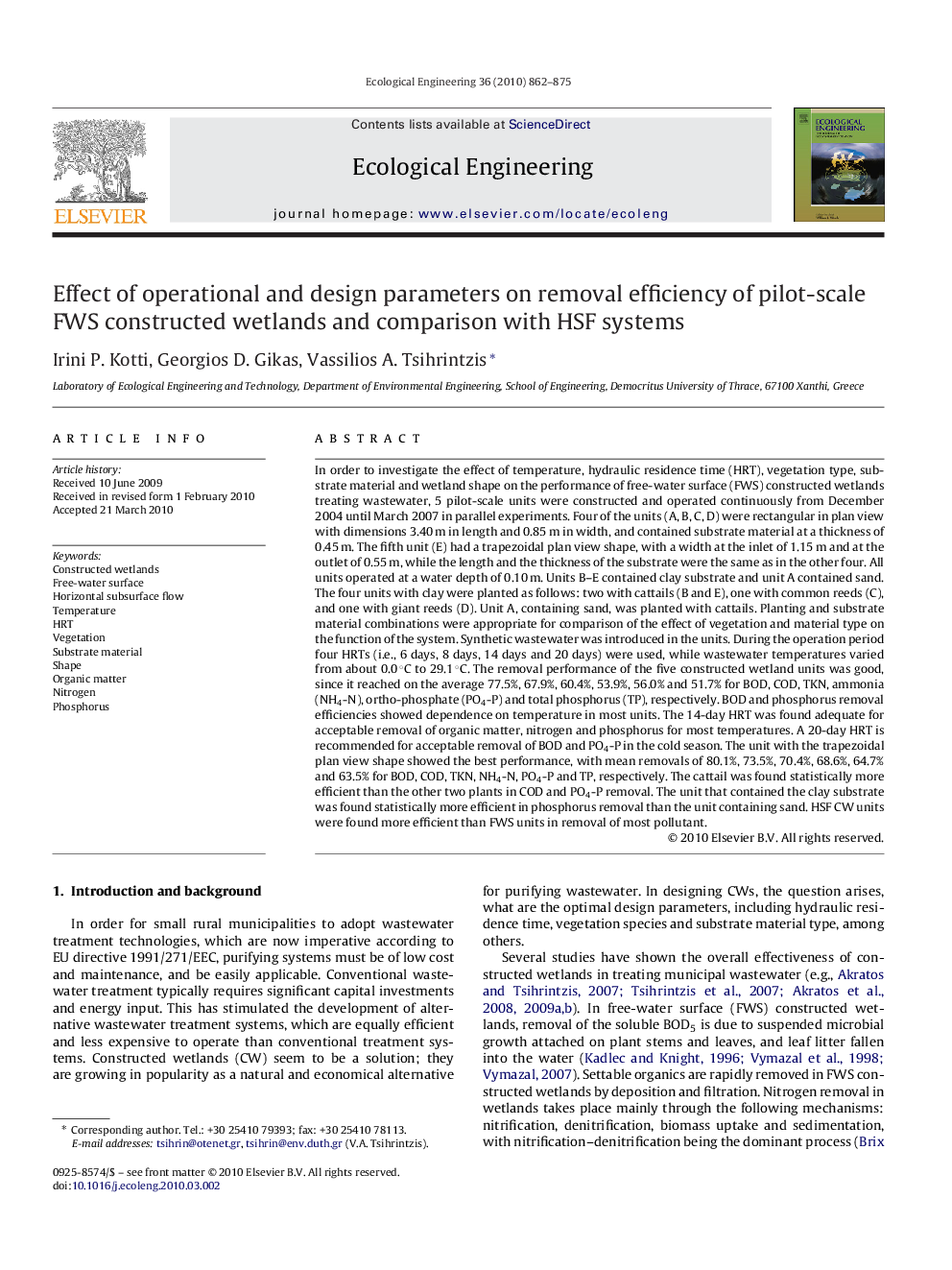| Article ID | Journal | Published Year | Pages | File Type |
|---|---|---|---|---|
| 4390438 | Ecological Engineering | 2010 | 14 Pages |
Abstract
In order to investigate the effect of temperature, hydraulic residence time (HRT), vegetation type, substrate material and wetland shape on the performance of free-water surface (FWS) constructed wetlands treating wastewater, 5 pilot-scale units were constructed and operated continuously from December 2004 until March 2007 in parallel experiments. Four of the units (A, B, C, D) were rectangular in plan view with dimensions 3.40 m in length and 0.85 m in width, and contained substrate material at a thickness of 0.45 m. The fifth unit (E) had a trapezoidal plan view shape, with a width at the inlet of 1.15 m and at the outlet of 0.55 m, while the length and the thickness of the substrate were the same as in the other four. All units operated at a water depth of 0.10 m. Units B-E contained clay substrate and unit A contained sand. The four units with clay were planted as follows: two with cattails (B and E), one with common reeds (C), and one with giant reeds (D). Unit A, containing sand, was planted with cattails. Planting and substrate material combinations were appropriate for comparison of the effect of vegetation and material type on the function of the system. Synthetic wastewater was introduced in the units. During the operation period four HRTs (i.e., 6 days, 8 days, 14 days and 20 days) were used, while wastewater temperatures varied from about 0.0 °C to 29.1 °C. The removal performance of the five constructed wetland units was good, since it reached on the average 77.5%, 67.9%, 60.4%, 53.9%, 56.0% and 51.7% for BOD, COD, TKN, ammonia (NH4-N), ortho-phosphate (PO4-P) and total phosphorus (TP), respectively. BOD and phosphorus removal efficiencies showed dependence on temperature in most units. The 14-day HRT was found adequate for acceptable removal of organic matter, nitrogen and phosphorus for most temperatures. A 20-day HRT is recommended for acceptable removal of BOD and PO4-P in the cold season. The unit with the trapezoidal plan view shape showed the best performance, with mean removals of 80.1%, 73.5%, 70.4%, 68.6%, 64.7% and 63.5% for BOD, COD, TKN, NH4-N, PO4-P and TP, respectively. The cattail was found statistically more efficient than the other two plants in COD and PO4-P removal. The unit that contained the clay substrate was found statistically more efficient in phosphorus removal than the unit containing sand. HSF CW units were found more efficient than FWS units in removal of most pollutant.
Keywords
Related Topics
Life Sciences
Agricultural and Biological Sciences
Ecology, Evolution, Behavior and Systematics
Authors
Irini P. Kotti, Georgios D. Gikas, Vassilios A. Tsihrintzis,
